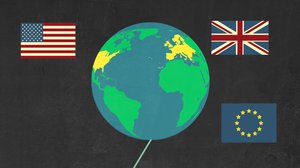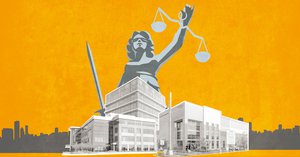The ways in which we talk about the climate crisis have changed a lot in recent years. For a long time, global warming was primarily understood as an environmental concern – think images of wildfires, floods and extreme weather, along with various calls to “save the planet”, “save the rainforest”, and “save the polar bears”.
Now, we acknowledge that it is also very much a human crisis; that ‘the environment’ isn’t some niche issue that can be easily separated from human concerns; that it’s not just the polar bears that are in danger, but us.With this shift has come the recognition that the solutions to the climate crisis are not just a scientific matter, but a political one too; that our discussions about the climate have to include more than just data and statistics on degrees of warming and atmospheric carbon concentration, but also concepts such as power, access to resources, and justice.

An unequal crisis
Since the climate crisis is a human crisis and a political crisis, that means that its solutions need to take into account the messy and complex world of global politics. ‘Climate justice’ as a concept recognises that, although global warming is a global crisis, its effects are not felt evenly around the world. The worst effects of the climate crisis – for example extreme heat, flooding and crop failures – are disproportionately felt by countries and communities in the Global South.
Furthermore, it recognises that the blame for creating the crisis we find ourselves in is not shared evenly, either. In an utter travesty of justice, the places which are currently suffering the effects of global warming bear little or no historical responsibility for causing it. Instead, the blame overwhelmingly lies with the rich countries of the Global North which used vast quantities of fossil fuels to power their industrial growth.For example, just one country – the United States – is responsible for more than a quarter of all carbon emissions to date, while the total for the entire continent of Africa is under 3%. The UK, though responsible for only 1% of present-day emissions, has a huge historical footprint. Up until 1882, it accounted for over half of all global carbon emissions.
Even this wildly unequal picture doesn’t quite capture the sheer inequity of historical carbon emissions, since much of the CO2 which is ascribed to lower- and middle-income countries is released in order to satisfy demand for consumer goods in high-income nations. For example, WWF has calculated that the UK’s ‘true’ carbon footprint could be up to twice its current size if it accounted for these outsourced emissions. This makes the UK’s much-vaunted success in reducing carbon emissions since 1990 seem much less impressive.
Disparity by design
This situation didn’t come about by accident, but as a result of deliberate political choices by rich countries. As with many present-day geopolitical problems, once you start looking back in time to find the reasons why, it’s not long before you arrive at European colonialism.
The wealth of European and North American economies was created in large part by extracting land, resources and manpower from countries in Africa, South America and Asia, creating the vast economic inequality which so defines the world today. Even after formal decolonisation, this extractive economic model is maintained by powerful companies whose supply chains stretch across borders, showing little respect for either local communities or the environment.

This persistent economic inequality has a profound impact on the resilience of countries around the world to climate change. As if to add insult to injury, the countries in the Global South which find themselves most impacted by a crisis created by the actions of the Global North, find themselves without adequate resources to adapt to that crisis – also due to the actions of the Global North.
The story is much the same when looking within individual countries. It is the wealthiest who are responsible for a disproportionate amount of carbon emissions, while it is the poorest and most marginalised who are hit first and hit hardest by the effects of global warming, and who at the same time are least equipped to adapt to the upheavals which it brings.
Towards climate justice
The egregious injustice of the climate crisis has important implications for our efforts to agree on international solutions. For example, demanding that all countries decarbonise at the same rate and split the remaining carbon budget evenly between them is, in the words of War on Want’s Asad Rehman:
The equivalent of rich countries eating every slice of pizza but one and then arguing everyone pick up [an] equal share of the cheque because they ate part of one slice.
To achieve climate justice, rich nations must acknowledge their historical culpability for creating this crisis and take steps to make amends – for example by supporting developing countries to transition to clean energy and adapt to our changing climate.

Governments of these nations must take legislative action to hold companies headquartered within their borders accountable for the harms they cause to both people and the environment overseas. That includes upholding the right of Indigenous peoples and communities safeguarding forests, who play an outsized role in protecting the natural world and are severely impacted by its destruction.
And lastly, any fair justice process involves listening to those who have been wronged. The same is true of climate justice, which must involve giving those who have been most impacted by the climate crisis a meaningful voice in climate policy negotiations, which have for too long been dominated by the interests of wealthy corporations and countries.
Taken from: https://www.globalwitness.org/en/blog/what-climate-justice/



